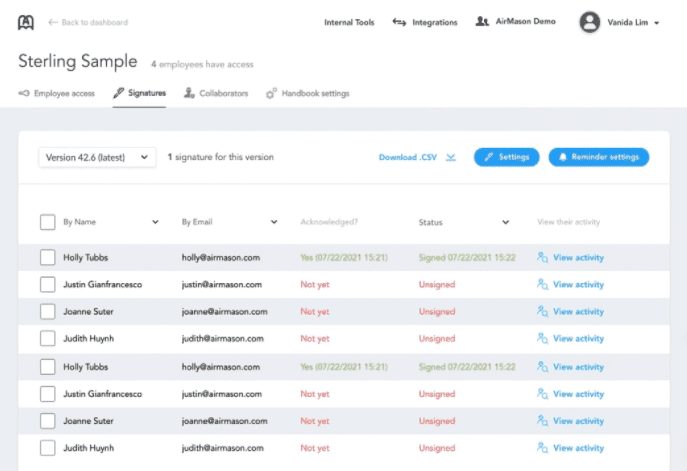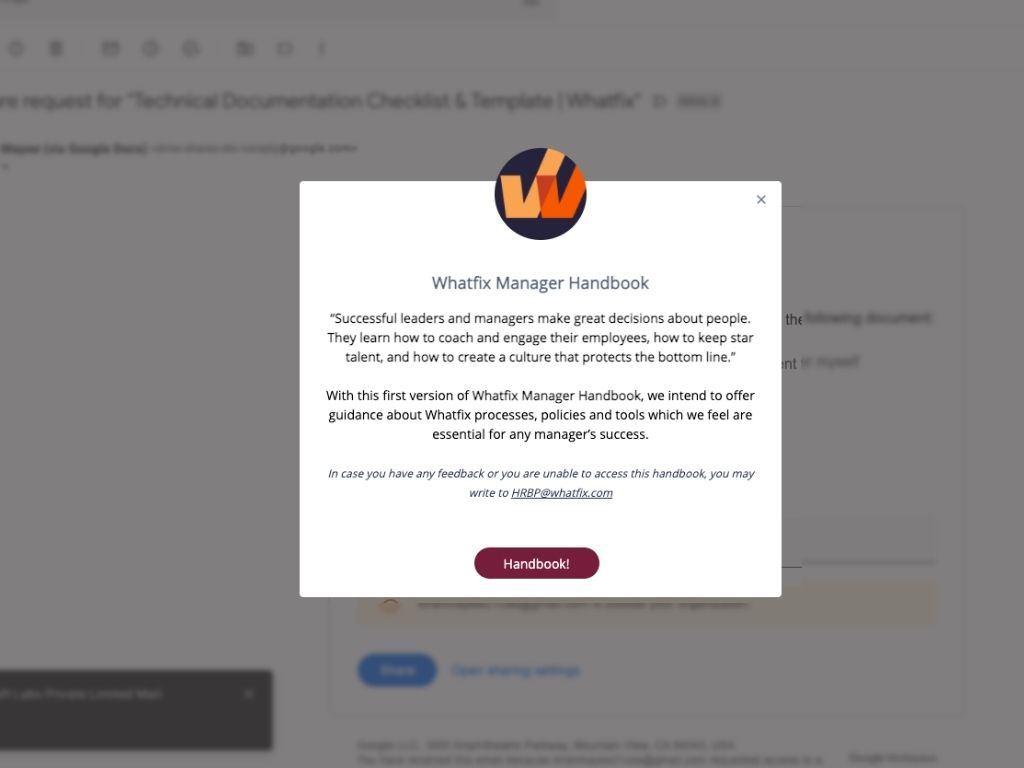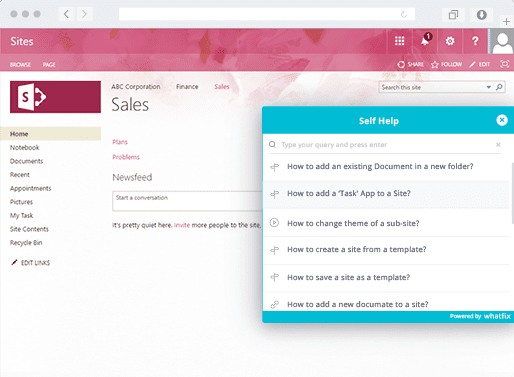
Remember that you don’t have to create an employee handbook. It exists for you and your employees’ convenience.
If you feel your employees don’t have problems with accessing information about their relationship with your organization, having a detailed knowledge base might be enough for you.
Nonetheless, an employee handbook has a bunch of compelling benefits for businesses and individuals:
Be sure that your employee handbook doesn’t replace essential process documentation , such as training manuals , video tutorials, or an internal wiki . These documents are helpful in different scenarios, but all of them serve one purpose – they help to streamline business processes and transfer knowledge.
Related ResourcesWe’ve already emphasized how employee handbooks come in totally different formats. It’s time to prove the point. Here are ten of the best employee handbook examples to use as inspiration when creating yours:
JetBlue’s handbook is a rare example of an employee handbook where all the information on company values, policies and employee benefits is presented in a way that doesn’t make readers feel overwhelmed. It’s a straightforward document that is presented in a PDF-format that can be sent digitally or that could be printed into a physical document as well.

Facebook has chosen to not include a set of rules in their official handbook. This is an example of an employee handbook that just tells the story that should motivate new recruits and long-term employees. Facebook actually prints off physical copies of their handbook (pictured here) and sends it out to all new employees, known as Facebook’s little red handbook . What makes it great? It transmits the company’s values, introduces everyone to the context, and empowers the whole organization.

Toggl’s official employee handbook isn’t available for public access, but the company displays brief handbooks that introduce prospective employees to the company culture on its website. The manuals guide people interested in applying for jobs at Toggl through their remote work policies, core values, and manifesto – during the application process, meaning employees are able to see if Toggl is a fit for them before they apply. This resource allows the company to attract hires that share their values.

First of all, it’s worth highlighting that Starbucks refers to its employees as partners. This single practice boosts employee morale significantly. The company’s Standards of Business Conduct regulate relationships between employees as well as customer relationships. It comes in a form of Q&A and therefore is easy to read and memorize – and is digitally available as a PDF.

Coca-Cola’s code of conduct is a comprehensive 41-page document – as we would expect from an enterprise company of its size. The manual guides employees through principles that should guide their decisions in the workplace. While the document contains a lot of information, a number of charts, maps, and other visual elements help to illustrate each point and make the information more digestible.

HubSpot’s employee handbook , or Culture Code, is a 153-page presentation, which actually doesn’t look so boring as it sounds. The company shares inspiring quotes, provides guidelines for using good judgment, and what’s most importantly, ignores policies and procedures. The large document covers everything an employee needs to know at HubSpot – while also setting the company’s culture tone.

Zoom’s employee handbook starts with a message from Eric Yuan, Founder and CEO at Zoom, which is followed by a clear table of contents. It’s remarkable how different policies are grouped based on the purpose they serve. At the bottom of the page, you can also see when the current version of the handbook has been created. It’s a clearly outlined and well-organized document that any employee could use to find answers to common HR-related questions at Zoom.

Twilio is the first employee handbook example on this list that makes it easy to switch between sections in one click with a simple-to-use and intuitive user navigation feature that includes jump links to various sections. That is important too, as employee can visit any necessary section without scrolling all the way through its comprehensive 44-page document.

Trello has built an employee handbook template right inside their own platform – allowing it to use its handbook as a way of conducting product knowledge training with new employees and building its brand right into its core internal processes. Each key component of an employee manual has a separate card that’s split into different sections. This employee handbook is incredibly easy to update, collaborate on, and make accessible by the entire organization.

Empower your employees with on-demand self-help wikis - embedded right into their apps and workflows.
It’s easy to make your employee handbook the most boring piece among all your process documents. If you want your employees to read it, try to keep it short and replace text with visual elements when possible. Here are a few tools that will help you make an employee handbook for your company that is memorable, effective, and easy to read:
Workest is an employee handbook builder for creating very simple text-based manuals. If you don’t have wild ambitions for designing an outstanding, unique handbook, the tool is the right choice for you to create a solid, standard handbook that looks official and gets the job done.

Visme is online software for creating visual brand experiences. Alongside other features, the platform offers a tool for creating employee handbooks. You can choose one of the multiple templates and customize it with your brand identity elements. It’s a great tool that provides HR teams with a suite of design features, created for non-design experts.

Canva functions similar to Visme, or any other drag-and-drop graphic design platform. It also offers a variety of employee handbook templates to choose from and allows users to realize almost any creative idea. Like Visme, it provides users with a plethora of tools that help non-design professionals create stunning company handbooks.

Blissbook is a dedicated tool for making employee handbooks. It not only facilitates the creation of visually appealing manuals but also offers opportunities for managing the resulting handbooks in a more effective way. It allows for communicating content changes to employees, collecting electronic signatures for compliance, tracking each policy’s version history, and more.

AirMason is another dedicated employee handbook builder on the list. It allows employers to track electronic signatures, notify employees of content updates, and receive activity reports. It also includes a wide range of templates that include handbooks designed for various industries, as well as various brand styles (such as modern, vibrant, chic, etc.)

Now that you know how a good employee handbook looks, it’s time to highlight a few actionable practices for making yours even better.
What will happen to your employee handbook if you present its printed version to a new recruit on their first day? Right, they’ll put it in the drawer, and it will be buried under the pile of papers.
Your employees should be able to access it via a direct link on any device – both desktop and mobile. With an employee handbook that’s instantly accessible online, it’s easier to tackle updates and keep track of users engaging with it.
With digital employee handbooks, HR professionals can keep track of who has – and who hasn’t – reviewed mandatory company policies, compliance issues, and code of conduct updates with easy-to-use analytic features.
These features make communicating policy changes and updates easy with simple features such as in-handbook pop-ups and email alerts to let employees know when rules and policies have had changes – and what’s new since the law time they viewed their employee handbook.
Below, you can see how Airmason users can see their workforce’s employee data in a centralized reporting dashboard on how they’re engaging with their employee handbooks, company policies, and code of conduct.

For frontline workers, you might need to provide a printed handbook though. However, you’ll need to remember to inform them of any handbook updates, which is easier when you have can connect with remote employees via online communication channels.
An employee handbook isn’t something you create once and never get back to it. To stay relevant for employees throughout the years – whether they join your organization in 2024 or 2040 – the manuals should be regularly revised and updated.
For instance, several states are going to adopt new paid family leave laws in 2021-2024 – the changes that should be reflected in the handbooks of hundreds of organizations. Whether they manage to effectively communicate new regulations to their employees or not will affect employee morale significantly.
By keeping your employee handbook relevant, you’ll also reduce the risk of a lawsuit. An outdated staff handbook can be harmful not only to your organization but also to the workforce.
36% of Millennials have no idea where they can access an employee handbook. Does it mean they don’t need it? Not at all. Does it mean they aren’t aware of the benefits its content can bring them? Probably.
What is for sure is that 64% of employers fail to make their employee handbooks applicable and, most importantly, easily accessible.

Above: With Whatfix, create pop-ups in your email, digital processes, and business apps that drive your employees to your handbook – helping to drive visibility of workplace policies and updated procedures.
If you haven’t adopted a tool for employee onboarding and managing yet, it’s the right time to do it. With a tool such as Whatfix , you’ll store all the business documentation, including an employee handbook and onboarding checklists, embedded in your workplace apps such as your email, MS Teams, CRM, HCM, and more.

Instead of wasting precious time trying to find the necessary information, your teams will get guidance in a few clicks – all embedded in their digital tools, processes, email, and more.
An employee handbook is very likely to turn into the Bermuda Triangle of policies unless you provide a table of contents and enable the search functionality.

Regardless of the format of your handbook and the channel for distribution, you need to enable its content to be searchable. To achieve a better experience, reflect any updates in the table of contents, highlight the most important issues, and consider including the FAQ section.
You’ve just seen top companies are moving away from ridiculously long, monotonous employee handbooks. They add quality visuals and use a conversational writing style to make employee handbooks readable and engaging. It’s also getting more popular using videos in place of a letter of a C-level executive.
You can also use pop-ups in your company’s email and digital tools to promote your handbook to your employees, in the flow of work, with tools such as Whatfix (seen below.)
Treat your employee handbook as a way of communicating your company’s unique vision – infuse it with color and include energetic visuals that support your points.
Making an employee handbook is an important step towards developing a strong knowledge-sharing culture . Today, you not only have a wide range of tools that make the creation of handbooks easy but also have opportunities for distributing and managing them effectively.
With Whatfix, embed an on-demand self-help wiki directly into your digital processes and tools – allowing your employees to search for answers to their company policies and procedures in the moment of need.